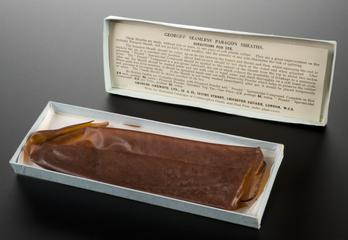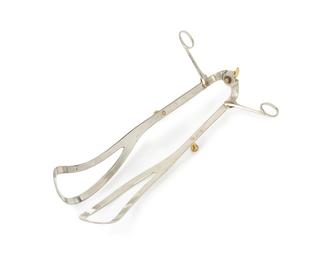
Tubal laparoscope, used by Patrick Steptoe
- Made:
- 1970-1975 in unknown place
- maker:
- Richard Wolf GMBH

Tubal laparoscope, made by Richard Wolf GmBH, Germany, 1970-1975. Used for tubal ligation procedures by Patrick Steptoe (1913-1988) at the Centre for Human Reproduction, Oldham.
Tubal ligation is a surgical procedure for sterilisation which involves clamping with clips the fallopian tubes, preventing eggs from reaching the uterus. This instrument was used to by Patrick Steptoe (1913-1988) to perform the operation at Oldham General Hospital, Greater Manchester, in the early 1970s.
A laparoscope is a fibre optic instrument that makes it possible to view the internal area being operated on. It permits abdominal or pelvic surgery via small incisions, while a person is under an anaesthetic. Steptoe pioneered the use of laparoscopy or keyhole surgery in Britain for the diagnosis and treatment of gynaecological conditions, and the technique played a critical role in the development of IVF, allowing eggs to be collected from the ovaries of volunteers without the need for invasive open surgery.
During the 1970s Steptoe and Robert Edwards (1925-2013) developed in vitro fertilisation (IVF), with Jean Purdy resulting in the birth of the world’s first ‘test-tube baby’, Louise Brown, in 1978. Edwards was awarded the 2010 Nobel Prize in Physiology or Medicine for his work on the development of IVF Steptoe was ineligible because the Nobel Prize is not awarded posthumously.
Details
- Category:
- Obstetrics, Gynaecology & Contraception
- Object Number:
- 2019-410
- Measurements:
-
overall: 360 mm 40 mm, .14 kg
- type:
- laparoscope
- credit:
- Bourn Hall Clinic, Cambridge




